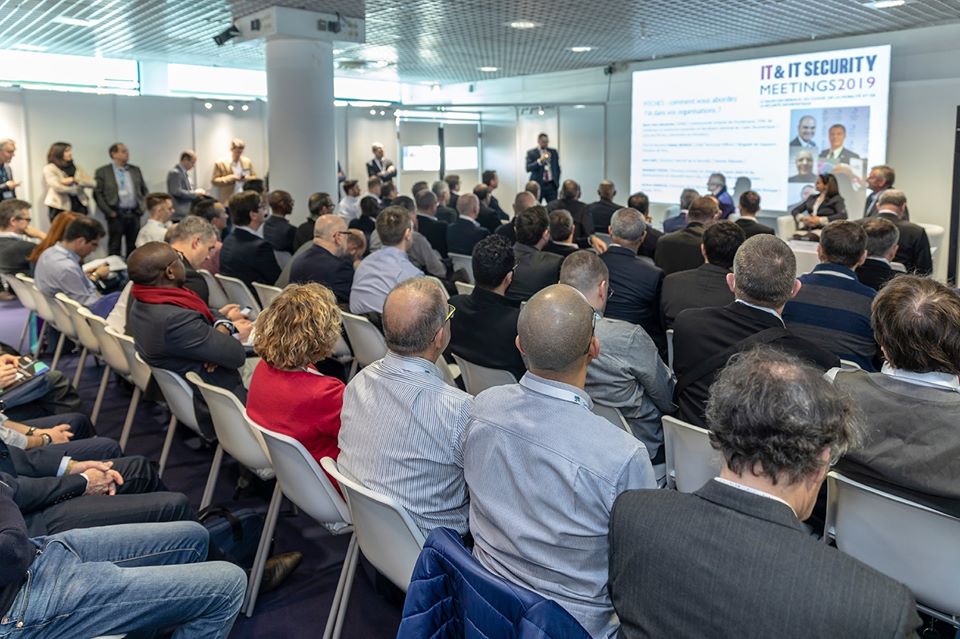PROGRAM
IT & CYBERSECURITY MEETINGS enables you to gain and perfect skills through plenary conferences and “solutions” workshops led by experts in your sector of activity.

2025 CONFERENCES & WORKSHOPS
AI-Powered Tool Exploitation: A Deep Dive into New Cyber Threats
Organized by I2CAT
Continue readingThe current ecosystem of multi-agent systems, especially when articulated through protocols such as MCP and techniques such as RAG (Retrieval-Augmented Generation), is advancing rapidly from a functional point of view, but it still drags along a security and governance logic designed for humans, not for autonomous agents operating at high speed and without direct supervision.
In particular, the use of static API keys and authorisation models designed for human users (based on interfaces, manual tokens, visible UIs, etc.) do not adequately translate the guarantees of control, interpretation and traceability to the world of LLM agents as:
● They have no explicit perception of the risks or consequences of their actions.
They may perform sensitive operations in the background, with no oversight or ability on the part of the user to intervene in time in case of error or misinterpretation of an assignment.
● They operate under an ‘enablement’ rather than an ‘explicit consent’ model.
● They overload users with unnecessary information, leading to cognitive costs and disproportionate or unintended consumption of resources.
Their vulnerability to manipulation by criminal actors exists at every point of integration, allowing access to and control of resources and tools in many cases with little or no forensic traceability.
Thus, when an LLM is given access to an API, resources and/or tools, using a key, the system assumes that its behaviour will be secure, but there is currently no standard layer to interpret context, audit decisions, or condition actions on dynamic and verified permissions, as would a human being using a controlled interface. This gap represents a systemic risk as more critical functions are delegated to automated agents that may be operated by rogue actors and protocols and strategies are already beginning to be developed to address and mitigate such threats by combining cryptography, structured semantic frameworks and DLT technologies.
Speaker:

Alfonso EGIO
Senior R&D Cybersecurity Engineer of the CyberSecurity & Blockchain Research Group – I2CAT
AI Security Risks & Winning Strategies
Organized by Ejona Preci
Continue readingAI is a double-edged sword in cybersecurity. While it empowers defenders with advanced threat detection and response, it also equips attackers with unprecedented capabilities for deception, automation, and scale. This session unpacks the latest AI-driven security risks and shares practical strategies for organizations to build resilience, harness the power of AI responsibly, and turn today’s risks into tomorrow’s competitive edge.
Speaker:

Ejona PREÇI
Award-Winning Cybersecurity Leader, Global 40-under-40 in Cybersecurity, Global CISO, Responsible AI Governor at GCRAI, Speaker, Author –
Unlock the Human Element: Proactive Cyber Prevention
Organized by I2CAT
Continue readingToday, more than 80% of cybersecurity incidents involve some human component, from unintentional mistakes to misuse of credentials or exploitation through social engineering. This reality calls for a change of approach: from post-incident reaction to proactive prevention based on the analysis of human behaviour in digital environments.
In this paper we will present a model based on user segmentation according to their level of risk, using indicators such as email interaction patterns, web browsing patterns, exposure to threats and metrics of response to awareness content. From this data, among others, we apply analysis and prioritisation techniques that allow us to anticipate potential attack vectors before they materialise.
We will share key findings from our research in corporate environments, demonstrating how this strategy significantly improves the effectiveness of awareness campaigns and reduces the attack surface. We will also see how the use of preventive measures can improve planning and investment in cybersecurity, obtaining metrics on the usefulness of the security measures applied to assess their ROI. The objective is clear: to unlock the potential of the ‘Human Element’ as an active and conscious line of defence within the cybersecurity ecosystem.
Speaker:

Nil ORTIZ
Senior R&D Cybersecurity Engineer del grupo de investigación CyberSecurity & Blockchain, i2CAT – I2CAT

